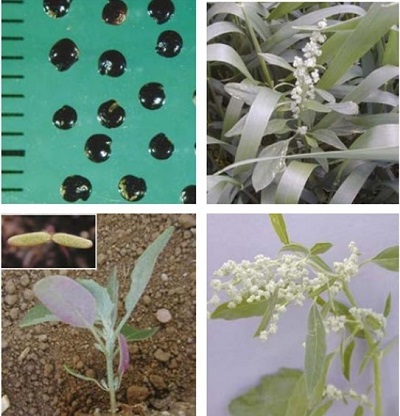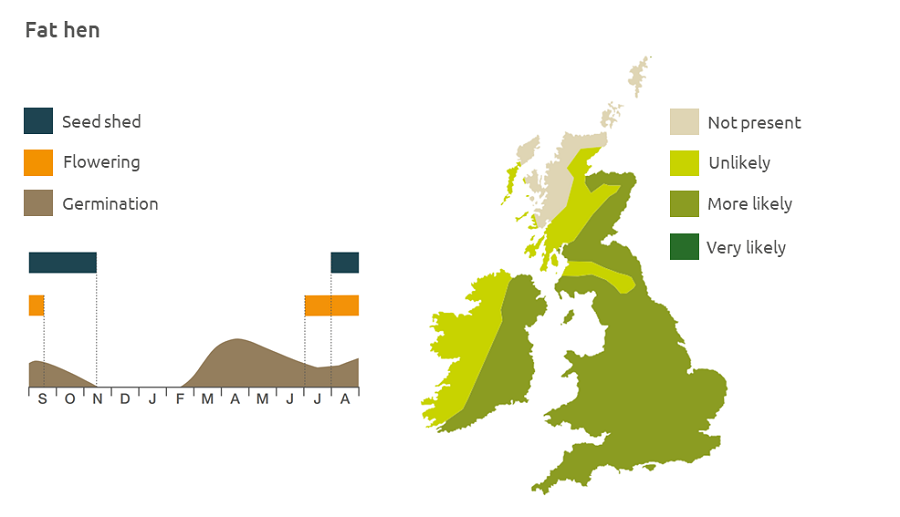- Home
- Knowledge library
- Distribution and biology of fat hen in the UK
Distribution and biology of fat hen in the UK
Fat hen is one of the most important and widespread weeds in the UK. Find out how to identify and control it.
Overview
Fat hen (Chenopodium album) is one of the most important and widespread of all weeds. Primarily it is a spring weed of broad-leaved crops such as potatoes, sugar beet and open row crops. Seeds may germinate in autumn but only spring-germinating seedlings go on to flower and set seed. Seeds are spread by crop contamination and dispersed by birds and mammals; about 20% germinate immediately. Fat hen extracts large quantities of nutrients from the soil. It has a highly persistent seedbank and seeds can remain dormant in the soil for many years.
- It is particularly competitive in spring crops
- It has value to biodiversity
Description
It is an annual dicotyledon, grey-green colour. It is upright, 20–50 cm tall but growing to 2 m in crops. The leaves are diamond shaped. The flowers are green and inconspicuous in many-flowered spikes.
Key features
Plant: The plant is often narrow without spreading branches and the leaves are mealy.
Lookalikes
Fat hen may be confused with common orache: fat hen has broader cotyledons and the undersides are often bright purple, unlike those of orache, which are bright green.

Location and life cycle

Geographic distribution
This is mainly a lowland weed, distributed widely in England and Wales and the arable areas of Scotland. It prefers arable or other cultivated ground.
Soil type
Can be found in most soil types, but prefers moist, high-nitrogen, humus-rich loams and sandy soil.
Seed statistics
- Seed longevity: >5 years
- Seed decline: 21% per year
- Germination depth: 4.8 cm
- Seed weight: 0.77 mg
- Seeds/flower: 1
- Seeds/plant: 3,000–20,000
Management
It is vital to prevent seed shed from fat hen to control population increase. There are a number of broad-spectrum herbicides that give good control.
For advice on herbicides, please speak with your agronomist or adviser.
When was this information last updated?
This page is based on content from the encyclopaedia of arable weeds publication. Since it was first released in 2008, the publication has been redesigned several times but not revised. However, it remains a good foundation for general information on the distribution and biology of weeds.

